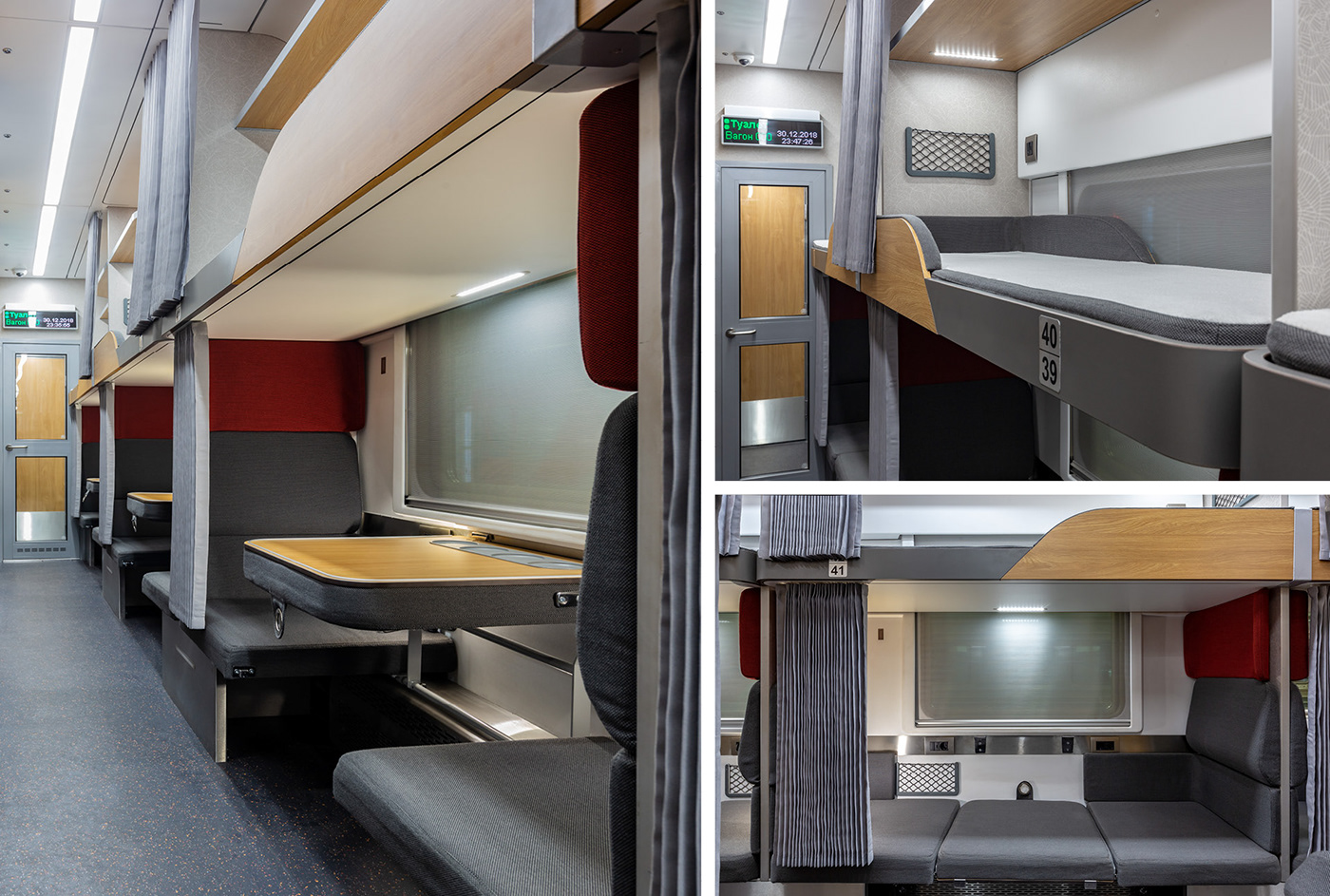
Russian Railways second-class night train
Ippiart Studio designed the new modular interior system, that could be used for the most typical carriage models, that now operated by Russian Railways (for new or for refurbishing). Preserving the conventional layout of carriages allows reducing costs. The new vision of design, ergonomics and answering for the passengers’ most popular requirements, allows achieving a fundamentally different level of comfort, the most focused on the convenience of travelling.
66%
passengers of long-distance routes travel by second-class trains
72 600 000
passengers every year — 50% of the Russian population


Passenger seats and sleeping berths are equipped with individual lighting, 220 V and USB sockets. Passengers, who use top sleeping berths, have an extra table with cup holders, special places for storing personal belongings near windows and spacious hand luggage racks.


Through the new partitions with built-in stairs and individual curtains, passengers can feel almost as comfortable as in the separate compartment. At any time, the curtains can be closed, giving the necessary privacy.

The service zone is equipped with cold and hot drink water dispenser. Next to it is an information touch panel, that can be used to order tickets, view schedules, restaurant menus and any other interactive purposes.


Working conditions for conductors are also improved. In the working compartment, there are cabinets for dishes, a built-in refrigerator, a microwave and a spacious sink. The conductor’s rest compartment is equipped with the same facilities as the passenger salon.

Lavatories are equipped with changing tables, taps with built-in hand dryers, automatic dispensers for soap and towels, hygienic showers.


